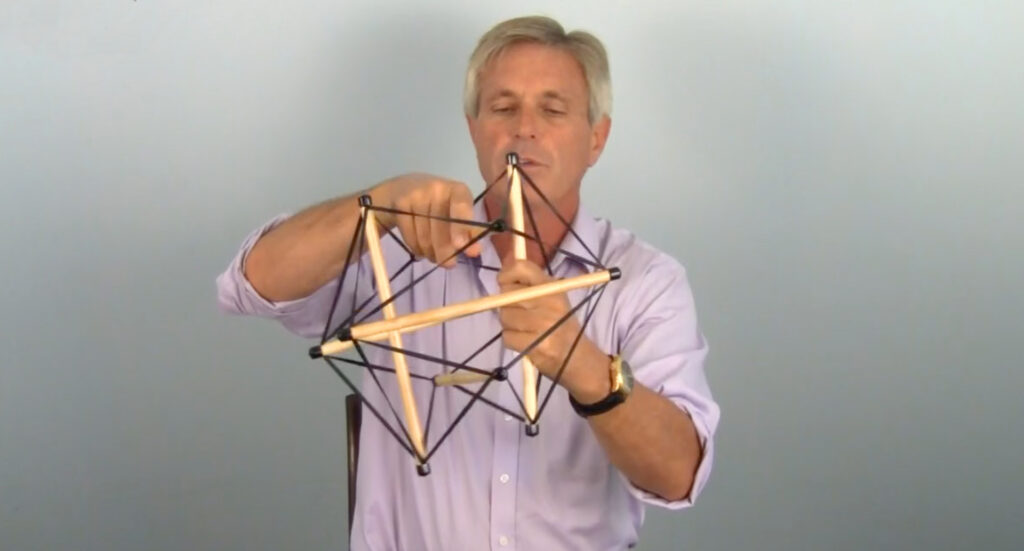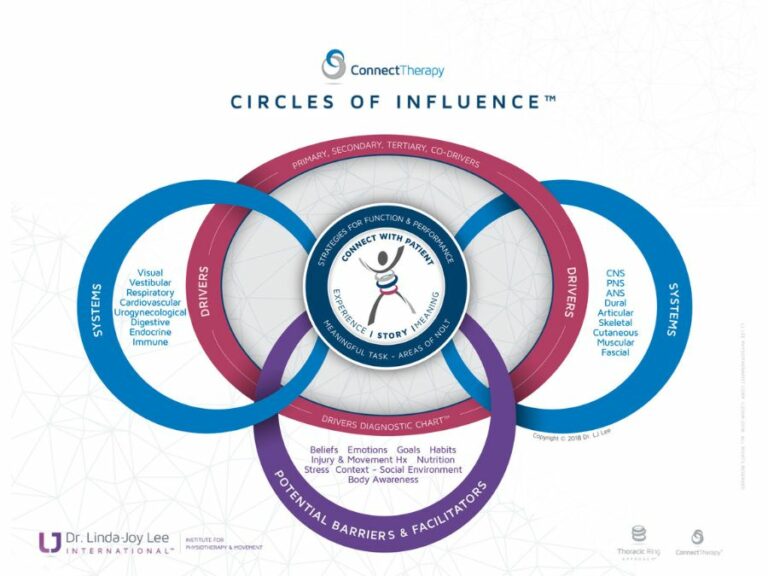The word Tensegrity comes from a blending of ‘tension + integrity’. The term, in relation to the body, was originally coined by Buckminster Fuller, to indicate that the integrity of a structure is derived from the balance of tensions, not the compression of struts.
See picture and more details here https://www.anatomytrains.com/fascia/tensegrity/
Tensegrity and the Body
Most man-made structures are ‘compressionegrities’ – their integrity lies with the continuity of compression from brick at the top of the building to the lowest block of concrete at the bottom foundations of a house – the compression runs in an unbroken line from element to element all the way to the ground.
When we think simply, it may seem like our bodies are constructed in the same way: the skeleton is a stack of bones, like a stack of bricks – a continuous compression structure from the skull to the feet.
However, when put into practice, all skeleton models are wired together to hold them up, they are not simply a group of bones stacked one on top of another. Similarly, in real life our actual skeletons need more than just their bones to hold them together. Our skeletal systems are held together in a mesh of soft tissue, just as a tensegrity structure is balance of both the tension members and the compression struts.
An important part of this ‘soft tissue soup’ is the fascia. Fascial continuity suggests that the myofascia acts like an adjustable tensegrity around the skeleton – a continuous inward pulling tension network like the elastics, with the bones acting like the struts in the tensegrity model, pushing out against the restricting ‘rubber bands.’
So what does the body as a Tensegrity’s structure mean for us?
When you play with a Tensegrity model, several things become apparent. Firstly, when you put strain into a tensegrity structure the deformation will get distributed all over the structure. This is significantly different to a continuous compression structure (like a house) which does not show this property. For example, when you load one corner of a building with a huge amount of water, that corner might collapse, but it will leave the rest of building intact. However, when you load a tensegrity structure, that load will be distributed around the whole structure.
Another important differentiation is to consider where these two different types of structures break. A strained compression structure will break where the strain is greatest (i.e. where the water is pooling on the roof). Whereas a strained tensegrity structure (like the body) will break at its weakest point (i.e. the ‘load’ that is causing pain or strain in the low back may be sourced in the foot or the shoulder) – at BPS we are able to see the pattern to know where to intervene.
What does this mean for you as our Bio Psychosocial (BPS) patients?
Often our clients’ bodies have areas where they are contracted or immobilized. Our aim when we work with bodies is to facilitate an opening, an expansion, a filling of space until the person is fully expressed. You can see now how this may apply not only to a person’s body, but also to their mind (Psycho) and their social connections as well. Tensegrities expand in all axes at once: open the structure in one dimension and every dimension expands. Neither buildings nor balloons display this property, but tensegrity structures and
Erik Dalton says, “Don’t chase the pain!”
Ida Rolf said: “Where you think it is, it ain’t.”
Both of these point to the tensegrity nature of the body.




